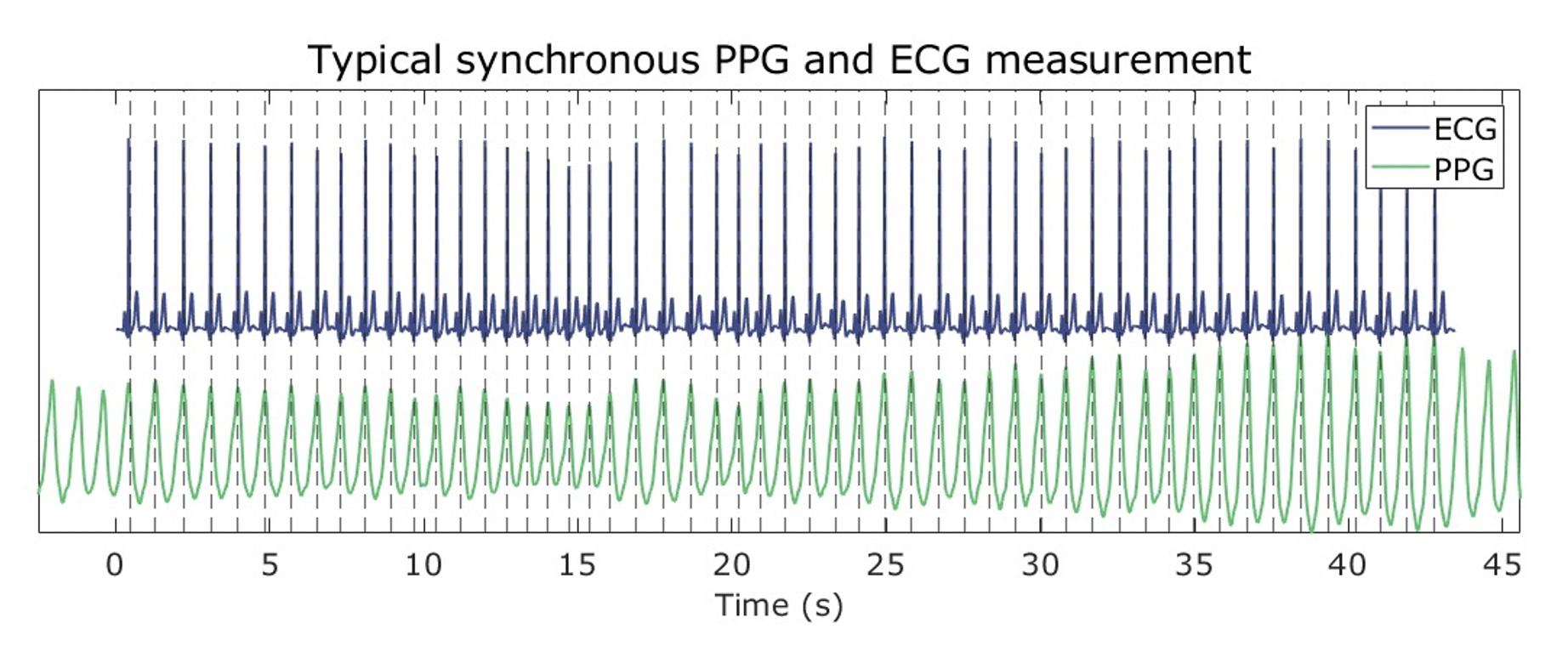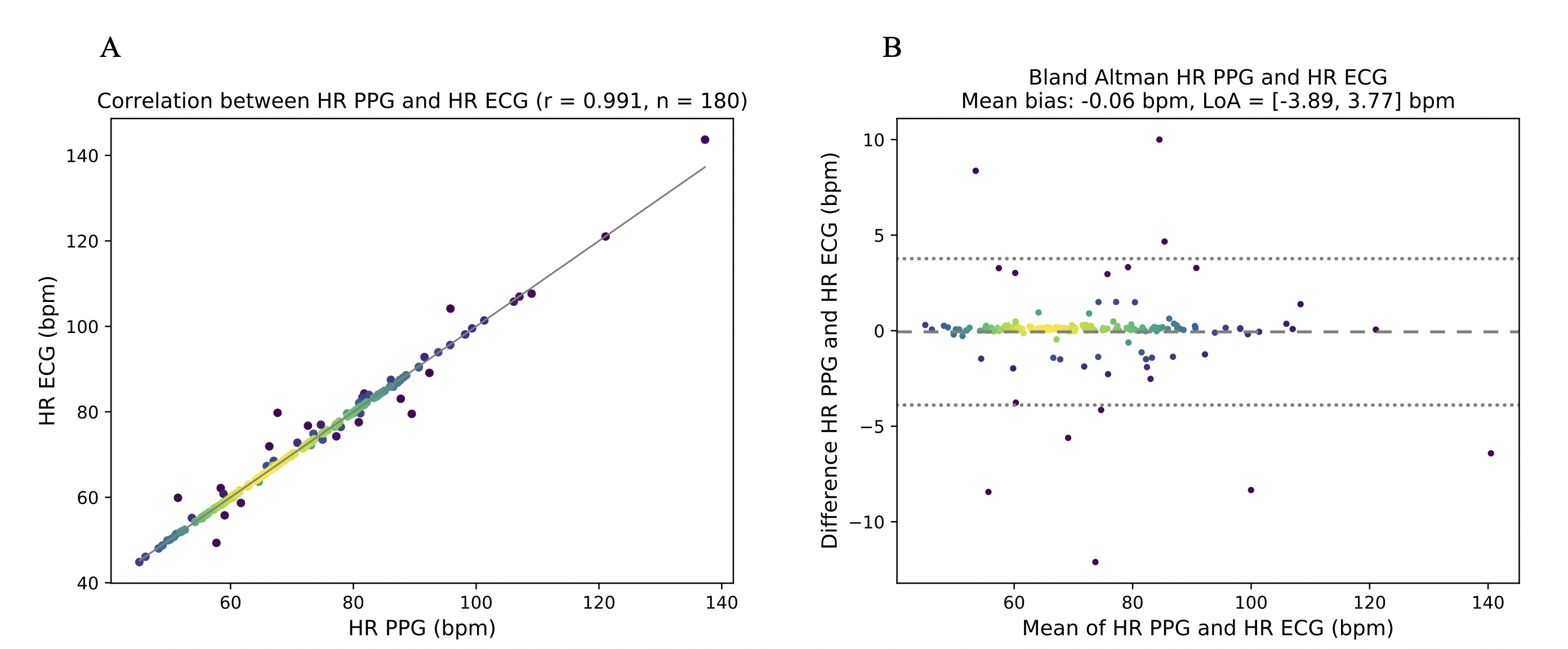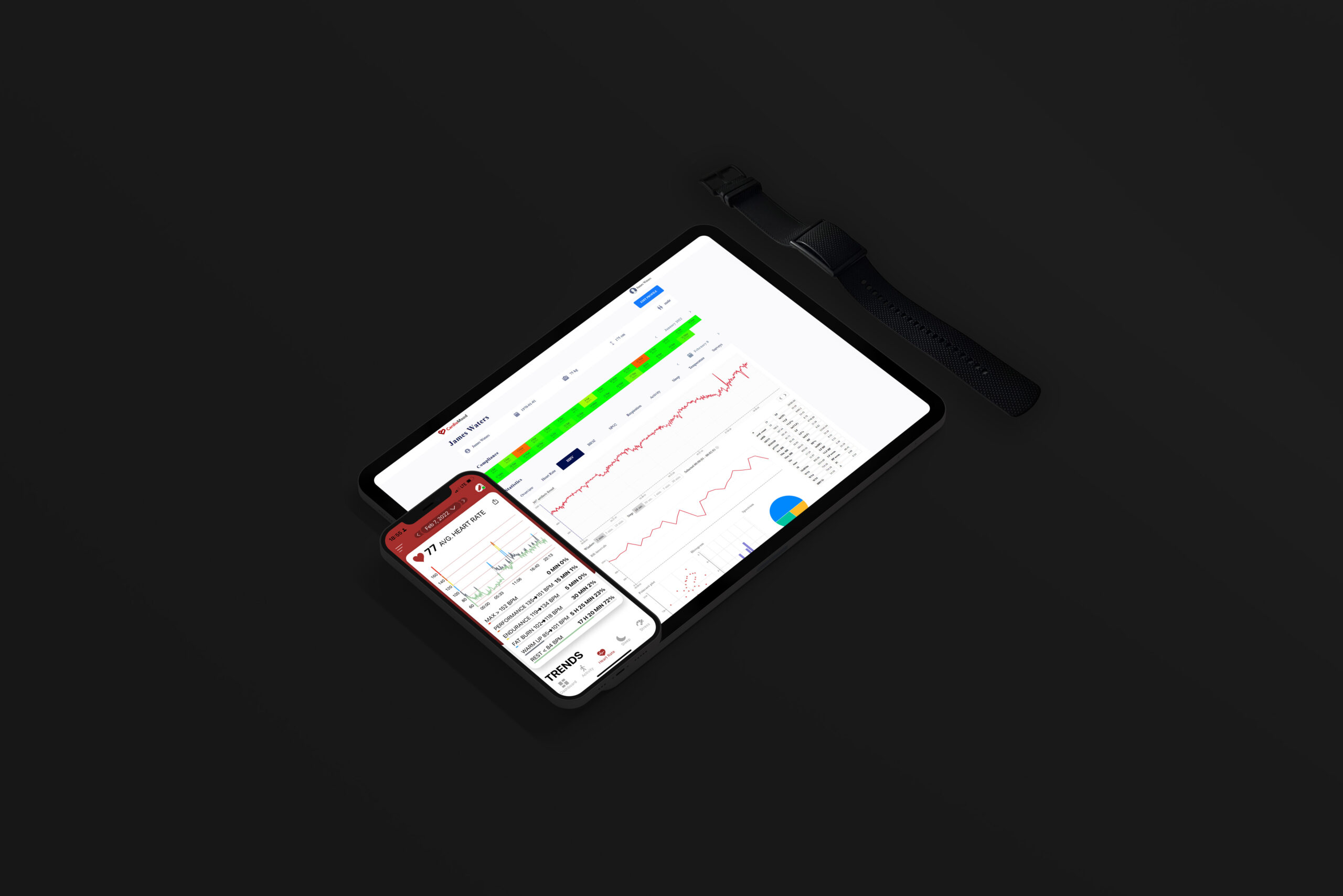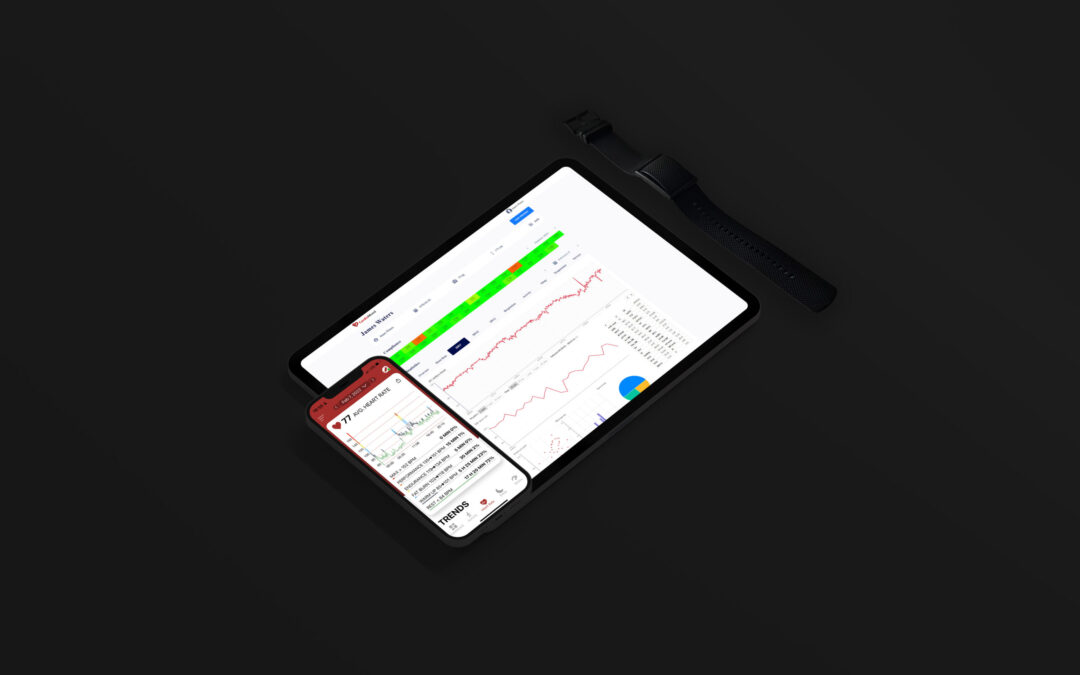CardioMood use high accuracy PPG technology to measure your heart parameters. The major advantage is that PPG is non-invasive and avoids electrodes. Until recently, ECG was considered the gold standard, but compliance with ECG is low. Typically, users cannot stand the electrode sticker for more than 3-5 days. Other known issues are drying-out electrodes whereafter the signal gets (very) bad. The future is high accuracy PPG for long-term continuous monitoring. We also want to monitor long-term as this gives the best baseline to increase performance and determine changes over time.
The accuracy of CardioWatch 287 with pulse detection using photoplethysmography technology in cardiac patients was studied by S. Blok [1,2], M.A. Piek [1], I.I. Tulevski [1], G.A. Somsen [1], M.M. Winter [1,3]. In this single-centre prospective study, patients from an outpatient cardiology clinic underwent a simultaneous resting ECG and PPG recording. 180 patients a total of 7,914 ECG beats were recorded and 7,880 (99%) were also recorded by PPG. Figure 1 displays an example of a 45 second PPG and ECG measurement. The PPG-accuracy, defined as the proportion of PPG measurements within 100 ms of ECG measurements, was 94.6% (95%CI 94.1-95.1).
Correlation was high for HR (R = 0.991 (95%CI 0.988-0.993), n = 180) (Figure 2A). The 95% Limits of Agreement (LoA) were -3.89 to 3.77 (mean bias -0.06) beats per minute (Figure 2). The RR-intervals on the PPG were highly correlated with those on the ECG (R = 0.966 (95%CI 0.964-0.968), n = 6,139) (Figure 3A), with a narrow 95% LoA of -85 to 85 (mean bias -1) ms (Figure 3B). This study showed that the 287 Bracelet with PPG-technology can determine HR and RR-intervals with high accuracy in cardiovascular at-risk patient population among different subgroups.
ECG VS PPG
Figure 1– Simultaneous recordings of PPG and ECG data. PPG measurement was started before and ended after the ECG registration. Non-matching PPG heartbeats were automatically matched to the closest P-top on the ECG-signal

CORRELATION BPM
Figure 2 – A. Correlation of HR-determination (beats per minute) between PPG and ECG. B. Limits of Agreement (LoA) of HR-determination between PPG and ECG, the 95% LoA are marked by the dotted lines.

CORRELATION
RR INTERVALS
Figure 3 – A. Correlation of determination of RR-intervals between PPG and ECG; the +/- 100ms range is marked by the dotted lines. B. Limits of Agreement (LoA) of determination of RR-intervals between PPG and ECG, the 95% LoA are marked by the dotted lines.

THE ACCURACY OF HEARTBEAT DETECTION USING PHOTOPLETHYSMOGRAPHY TECHNOLOGY IN CARDIAC PATIENTS.
This validation study showed that the 287 CardioWatch/Bracelet with PPG-technology can determine HR and RR-intervals with high accuracy in a cardiovascular patient population, with high quality output in different subgroups, especially when combined with a signal quality indicator. Due to their non-intrusive and convenient nature, wearable devices like these have great potential for high volume accessible long-term monitoring at-risk cardiac patients.

RESEARCH PORTAL
CardioMood is not just a bracelet with an App, we offer an extensive Research Portal to analyze HRV and other vital parameters.
You can access the portal here: https://study.cardiomood.com/

REFERENCES
- Department of Cardiology, Cardiology Centers of the Netherlands. Karel du Jardinstraat 61, Amsterdam, the Netherlands
- Department of Vascular Medicine, Internal medicine, Amsterdam UMC, University of Amsterdam, Amsterdam Cardiovascular Sciences, Meibergdreef 9, Amsterdam, The Netherlands
- Department of Cardiology, Amsterdam UMC, University of Amsterdam, Amsterdam Cardiovascular Sciences, Meibergdreef 9, Amsterdam, The Netherlands

